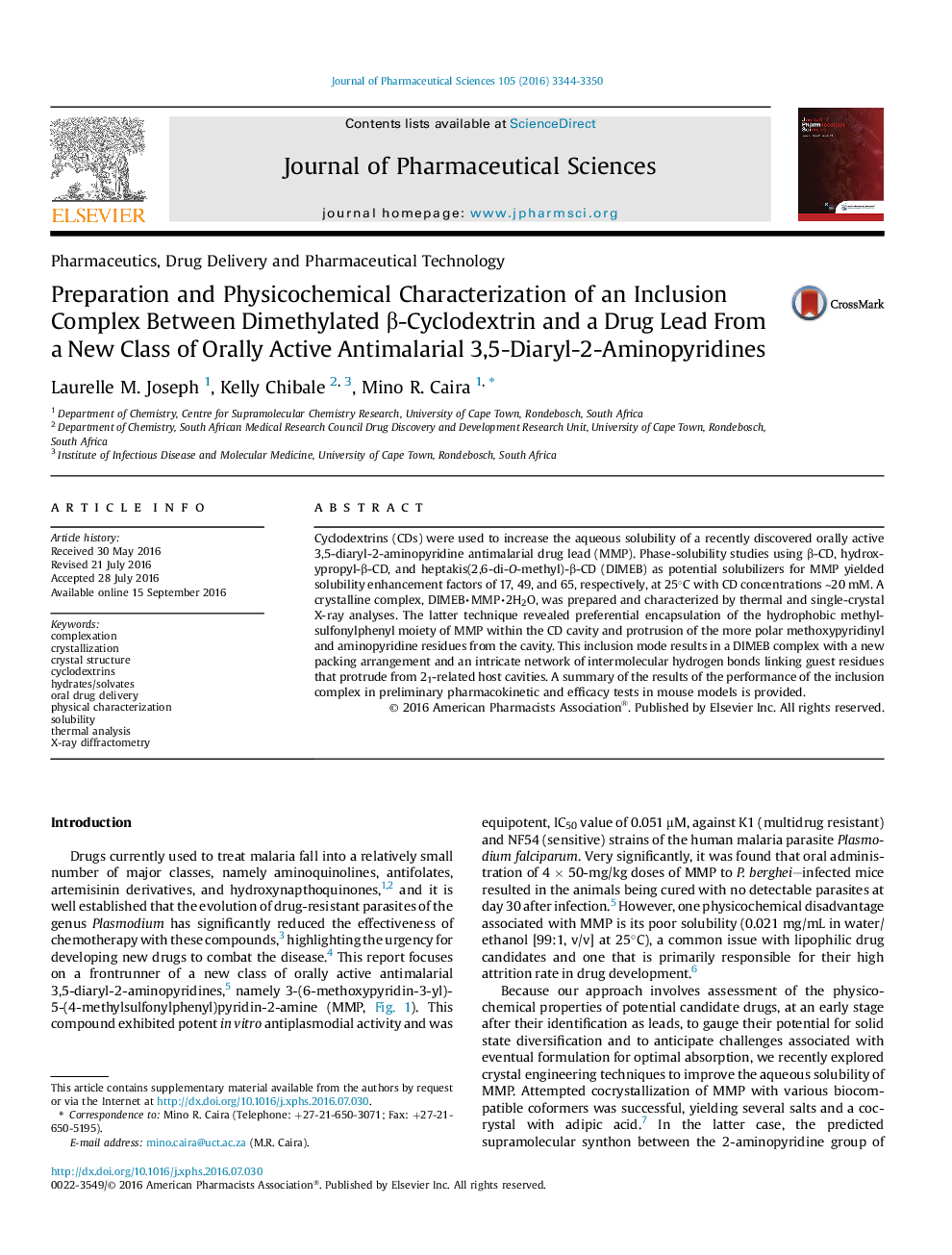| Article ID | Journal | Published Year | Pages | File Type |
|---|---|---|---|---|
| 8514749 | Journal of Pharmaceutical Sciences | 2016 | 7 Pages |
Abstract
Cyclodextrins (CDs) were used to increase the aqueous solubility of a recently discovered orally active 3,5-diaryl-2-aminopyridine antimalarial drug lead (MMP). Phase-solubility studies using β-CD, hydroxypropyl-β-CD, and heptakis(2,6-di-O-methyl)-β-CD (DIMEB) as potential solubilizers for MMP yielded solubility enhancement factors of 17, 49, and 65, respectively, at 25°C with CD concentrations â¼20 mM. A crystalline complex, DIMEBâ
MMPâ
2H2O, was prepared and characterized by thermal and single-crystal X-ray analyses. The latter technique revealed preferential encapsulation of the hydrophobic methylsulfonylphenyl moiety of MMP within the CD cavity and protrusion of the more polar methoxypyridinyl and aminopyridine residues from the cavity. This inclusion mode results in a DIMEB complex with a new packing arrangement and an intricate network of intermolecular hydrogen bonds linking guest residues that protrude from 21-related host cavities. A summary of the results of the performance of the inclusion complex in preliminary pharmacokinetic and efficacy tests in mouse models is provided.
Keywords
Related Topics
Health Sciences
Pharmacology, Toxicology and Pharmaceutical Science
Drug Discovery
Authors
Laurelle M. Joseph, Kelly Chibale, Mino R. Caira,
